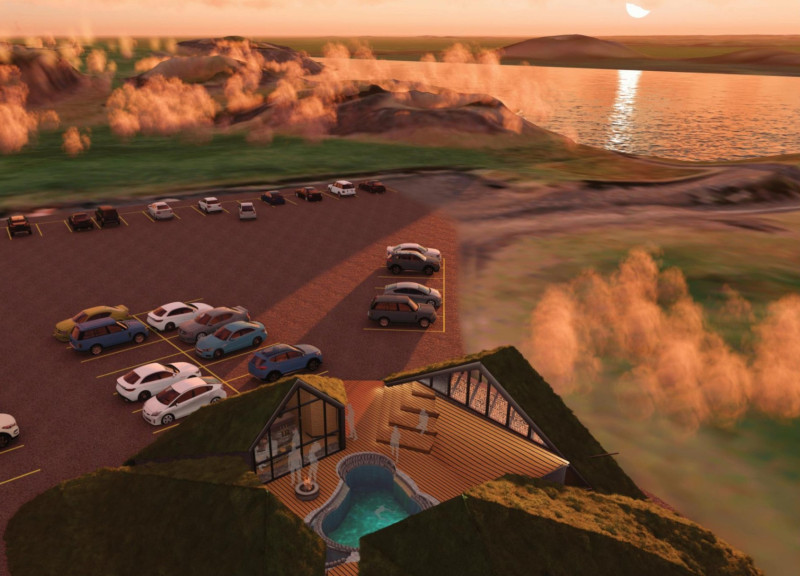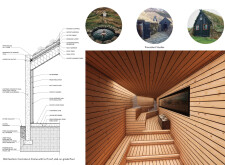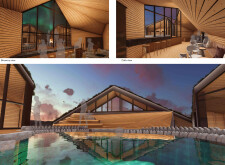5 key facts about this project
## Overview
The Icelandic Beer Spa is situated in a landscape characterized by pseudo-craters, offering expansive views of Iceland’s geothermal terrain. The design aims to create a recreational space that highlights both the natural environment and Iceland's brewing heritage. By integrating the facility into its surroundings, the spa facilitates a comprehensive experience for guests, allowing them to engage with both the spa amenities and the scenic beauty of the area.
## Spatial Configuration
### Site Plan
The layout of the spa is organized in a radial configuration, with a central pool area designed for relaxation and social interaction. Fluid transitions guide visitors between various functional spaces, including spa treatment rooms, sauna and shower facilities, and communal areas such as the brewery and café. This arrangement encourages both individual wellness and communal engagement while maintaining a sense of tranquility.
### Interior and Exterior Interaction
The architectural sections emphasize the relationship between indoor and outdoor spaces, fostering a connection with the natural elements. Transparent glass facades allow for abundant natural light and uninterrupted views, reinforcing the spa's integration with the surrounding landscape. Organic curves prevalent in the design extend to both the central pool area and treatment zones, enhancing the overall user experience through thoughtful spatial layering.
## Material Selection
A diverse range of materials has been employed to harmonize with the natural surroundings while serving functional purposes. Predominantly, wood planking provides warmth and contributes to a relaxing atmosphere. Concrete is strategically utilized for structural integrity and waterproofing, while stone accents enhance both aesthetic appeal and functional utility around geothermal features. Large expanses of glass maintain an open ambiance, ensuring proximity to the landscape, and turf roofs reflect traditional Icelandic architecture, promoting energy efficiency and plant growth.
This careful orchestration of materials and layout supports the overarching objectives of sustainability and cultural authenticity, establishing a setting that not only respects its natural context but also enriches the visitor's experience.






















































